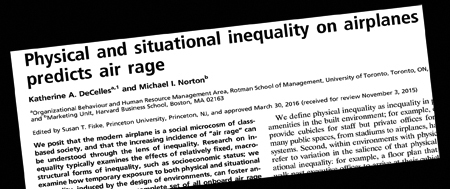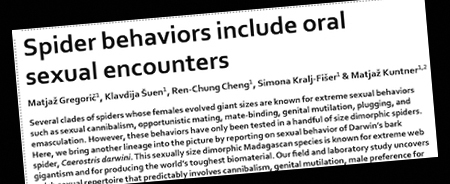Marc Abrahams's Blog, page 271
May 6, 2016
“If it smells like meat…” a ‘Rule of Thumb’ for dogs
Although you might think (as many have) that dogs have a strong preference for eating meat, things may not be quite so clearcut. Authors Anandarup Bhadra and Anindita Bhadra of The Dog Lab (doggedly observing dogs at the Department of Biological Sciences, Indian Institute of Science Education and Research, Kolkata, India), propose instead that dogs’ food preferences are governed by a relatively simple “Rule of Thumb”.
 The rule is : “If it smells like meat, eat it.” The team’s experimental study ‘Preference for meat is not innate in dogs.’ is published in the Journal of Ethology. 32 (1): 15-22. A full copy may be found here:
The rule is : “If it smells like meat, eat it.” The team’s experimental study ‘Preference for meat is not innate in dogs.’ is published in the Journal of Ethology. 32 (1): 15-22. A full copy may be found here:
Photo is courtesy: ‘Guide to making and selling Pet Treats in West Virginia’

New book by the often-stung King of Stings
Ig Nobel Prize winner Justin Schmidt‘s new book, The Sting of the Wild, has just been released into the wild. It’s a firsthand account of being stung by many insects, told with deep love and understanding of most of those insects, and with wild appreciation of the power and variety of those stings.
Douglas Main interviewed Justin Schmidt, for Newsweek magazine.
The 2015 Ig Nobel Prize for physiology and entomology (the prize was awarded in a joint category) was awarded jointly to two individuals: to Justin Schmidt, for painstakingly creating the Schmidt Sting Pain Index, which rates the relative pain people feel when stung by various insects; and to Michael L. Smith, for carefully arranging for honey bees to sting him repeatedly on 25 different locations on his body, to learn which locations are the least painful (the skull, middle toe tip, and upper arm). and which are the most painful (the nostril, upper lip, and penis shaft).
Their research is documented in these two studies:
“Hemolytic Activities of Stinging Insect Venoms,” Justin O. Schmidt, Murray S. Blum, and William L. Overal, Archives of Insect Biochemistry and Physiology, vol. 1, no. 2, 1983, pp. 155-160.
“Honey Bee Sting Pain Index by Body Location,” Michael L. Smith, PeerJ, 2014, 2:e338.
BONUS: Watch video of Justin Schmidt and Michael Smith being awarded their prize at the 2015 Ig Nobel Prize ceremony.

May 5, 2016
“Being German is No Laughing Matter”
Andreas Kluth, the Berlin bureau chief of the British magazine The Economist, wrote an essay called “Being German is No Laughing Matter“. Here is the beginning of that essay:
Shortly after moving back to Germany in 2012 after decades of absence, mainly in Anglo-Saxon countries, I took my kids to the Berlin zoo. The children were two, four and seven at the time, and had already developed a keen sense of irony (particularly the eldest one) – or at least they understood that dad doesn’t always mean things literally, because, you know, it’s funny. So we queued for our tickets, trading silly jokes. Like me, the kids are dual citizens of America and Germany, though at that time, fresh from California, we still felt more American and more at ease in English. But we deliberately spoke German, to help us acclimatise to our new home. In a mood of levity, we approached the ticket window.
The lady behind it informed me that the price for the elder two was such-and-such and the little’un was free. “What if I pay you a bit extra and you keep them?” I suggested. The kids snortled and started naming prices that might clear the market.
The lady stared back, horrified. Then, slowly, she leaned forward to look at my children, who stiffened. “Your dad does not really mean that,” she said. “He does not really want to sell you.”
That pretty much killed the mood for all four of us until somewhere between the giraffes and the polar bears. “Why did she say that?” my daughter asked, in English, as though out of an instinct for cultural self-preservation. As I pondered the question, I couldn’t help but think there was something peculiarly German about the lady’s reaction. First, Germans really, really struggle to grasp non-literal meanings. Second, Germans really, really can’t help but say when they think you’re wrong….

“Commenting by Emoji: A Tentative Glossary for Legal Writing Professors”
Are you a legal-writing professor? Unsure about the use of Emoji(s) for comments on academic work? Jennifer Murphy Romig who is an Instructor in Legal Writing, of the Research and Advocacy Program at Emory University School of Law, Atlanta, US, has produced a guide to ‘Commenting by Emoji: A Tentative Glossary for Legal Writing Professors’. Here is an excerpt:
Also see: ‘To :) or not to :) ?’ and ‘The trouble with emoji: Misinterpreted emotions’.

May 4, 2016
Stress Analysis of a Strapless Evening Dress (podcast 62)
What is necessary — from an engineer’s perspective —to keep a strapless evening dress in place? We explore that question, and the Henson-Conantian music that resulted from it, in this week’s Improbable Research podcast.
SUBSCRIBE on Play.it, iTunes, or Spotify to get a new episode every week, free.
This week, Marc Abrahams — with dramatic readings by Nicole Sharp — tells about:
Stress Analysis of a Strapless Evening Dress: The essay — Charles E. Siem‘s essay “Stress Analysis of a Strapless Evening Gown” appears in the book called Stress Analysis of a Strapless Evening Gown, edited by Robert Baker. Here’s a look at the book cover, and at one of the diagrams in the essay:
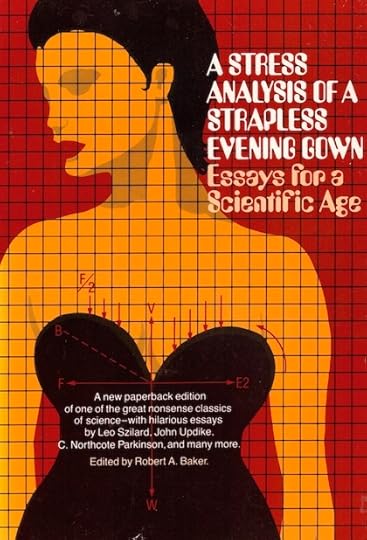
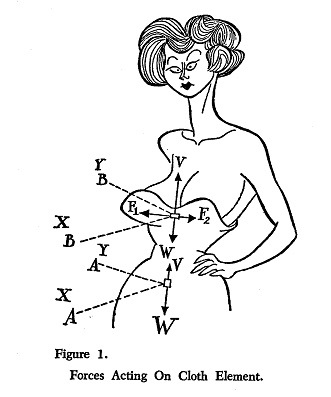 Stress Analysis of a Strapless Evening Gown: The music— Deborah Henson-Conant‘s musical creation appears on her Grammy-nominated album
Invention & Alchemy
, which is available via her web site, HipHarp.com:
Stress Analysis of a Strapless Evening Gown: The music— Deborah Henson-Conant‘s musical creation appears on her Grammy-nominated album
Invention & Alchemy
, which is available via her web site, HipHarp.com:

Stress Analysis is a collection of knowledge and techniques developed by engineers, to help them figure out whether particular objects will remain intact, or will instead crack and perhaps break.
The mysterious John Schedler or the shadowy Bruce Petschek perhaps did the sound engineering this week.
The Improbable Research podcast is all about research that makes people LAUGH, then THINK — real research, about anything and everything, from everywhere —research that may be good or bad, important or trivial, valuable or worthless. CBS distributes it, on the CBS Play.it web site, and on iTunes and Spotify).

May 2, 2016
Positing Air Rage: High Society, Ill-fitting in Flights, Having Fits
Pugnacious behavior of airline passengers mirrors that of the society that is, in several ways, miles below them, suggests this newly published study. By studying what happens to the the high class people and other classy people crammed into high-flying airplanes, you can better understand what happens to the teeming, sometimes steaming, millions on the ground:
 “Physical and Situational Inequality on Airplanes Predicts Air Rage,” Katherine A. DeCellesa [pictured here] and Michael I. Norton, Proceedings of the National Academy of Sciences, epub May 2, 2016. The authors, at the University of Toronto and Harvard Business School, explain:
“Physical and Situational Inequality on Airplanes Predicts Air Rage,” Katherine A. DeCellesa [pictured here] and Michael I. Norton, Proceedings of the National Academy of Sciences, epub May 2, 2016. The authors, at the University of Toronto and Harvard Business School, explain:
“We posit that the modern airplane is a social microcosm of class-based society, and that the increasing incidence of “air rage” can be understood through the lens of inequality…. Analyses reveal that air rage is more common in economy class on airplanes, where inequality is physically present, and in both economy and first class when inequality is situationally salient. We extend research demonstrating that the salience of inequality decreases prosocial behavior by higher class individuals, showing that temporary exposure to physical and situational inequality predicts antisocial behavior among individuals in both higher and lower classes.”

Virtual cockroaches alleviate fear of cockroaches
Not many people with a fear of, say, cockroaches, would be happy to let a few of them roam across their bare hands (in order to alleviate their fears by habituation). In other words:
“Although in vivo exposure is the treatment of choice for specific phobias, some acceptability problems have been associated with it.”
In the world of Augmented Reality (AR) though, they might consent to such things. Virtual cockroach possibilities are examined in a new paper for PLoS ONE 11(2), February, 2016. In Vivo versus Augmented Reality Exposure in the Treatment of Small Animal Phobia: A Randomized Controlled Trial.  Researchers Cristina Botella, M. Ángeles Pérez-Ara, Juana Bretón-López, Soledad Quero, Azucena García-Palacios, and Rosa María Baños found that:
Researchers Cristina Botella, M. Ángeles Pérez-Ara, Juana Bretón-López, Soledad Quero, Azucena García-Palacios, and Rosa María Baños found that:
“Results obtained in this study indicate that Augmented Reality exposure is an effective treatment for specific phobias and well accepted by the participants.”
Question: Would you lay naked on a stage while 13 giant Madagascar hissing cockroaches (real ones) explore your body? Stacey Sewell did – see: Music | Cockroaches | Nudity – a review

May 1, 2016
Sixteen-legged Oral Sex
Sixteen legs, all told, are involved in the kind of one-on-one sexual activity celebrated in this new study:
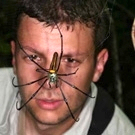 “Spider behaviors include oral sexual encounters,” Matjaž Gregorič [pictured here, right], Klavdija Šuen, Ren-Chung Cheng, Simona Kralj-Fišer & Matjaž Kuntner, Scientific Reports, vol. 6, no. 25128, epub 2016. The authors, at Scientific Research Centre of the Slovenian Academy of Sciences and Arts and the Smithsonian Institution, Washington, DC, write:
“Spider behaviors include oral sexual encounters,” Matjaž Gregorič [pictured here, right], Klavdija Šuen, Ren-Chung Cheng, Simona Kralj-Fišer & Matjaž Kuntner, Scientific Reports, vol. 6, no. 25128, epub 2016. The authors, at Scientific Research Centre of the Slovenian Academy of Sciences and Arts and the Smithsonian Institution, Washington, DC, write:
“Here, we bring [report] on sexual behavior of Darwin’s bark spider, Caerostris darwini. This sexually size dimorphic Madagascan species is known for extreme web gigantism and for producing the world’s toughest biomaterial. Our field and laboratory study uncovers a rich sexual repertoire that predictably involves cannibalism, genital mutilation, male preference for teneral females, and emasculation. Surprisingly, C. darwini males engage in oral sexual encounters, rarely reported outside mammals. Irrespective of female’s age or mating status males salivate onto female genitalia pre-, during, and post-copulation.”
Daniel Oberhaus wrote an appreciative essay about this in Motherboard.
This adds to the list of species eagerly observed, by humans, to engage in oral sex. Among the very most celebrated: The 2010 Ig Nobel Prize for biology was awarded to Libiao Zhang, Min Tan, Guangjian Zhu, Jianping Ye, Tiyu Hong, Shanyi Zhou, and Shuyi Zhang of China, and Gareth Jones of the University of Bristol, UK, for scientifically documenting fellatio in fruit bats. Their report about that is; “Fellatio by Fruit Bats Prolongs Copulation Time,” Min Tan, Gareth Jones, Guangjian Zhu, Jianping Ye, Tiyu Hong, Shanyi Zhou, Shuyi Zhang and Libiao Zhang, PLoS ONE, vol. 4, no. 10, e7595. Here is video of that:
Ed Yong, a specialist in this line of research, published an appreciative essay in 2013 on that fruit bat paper and on a subsequent, related discovery: “You’ve Seen Fruit Bat Fellatio. Now: Fruit Bat Cunnilingus.”

Theory of Everything: Gendered Exploitation of Cockfighting Roosters
Here’s another entry in the competition for A Theory That Explains Everything. This one is a study published in the year 2010:
“Roosters, hawks and dawgs: Toward an inclusive, embodied eco/feminist psychology,” pattrice jones, Feminism Psychology, vol. 20 no. 3, August 2010, pp. 365-380. The author (who spell her names with all lowercase letters) explains:
“The gendered exploitation of roosters used in cockfighting is a case example of the social construction of gender via animals… The rehabilitation of roosters used in cockfighting illustrates the utility of an expanded and amended conception of Herman’s principles of trauma recovery enacted within the emerging insights of trans-species psychology. Those insights lead us toward a truly inclusive eco/feminist psychology centered on acceptance of situated human animality and an understanding of traumatic alienation as a factor in both personal and communal problems in living, including climate change.”
(Thanks to Ron Josephson for bringing this to our attention.)

April 30, 2016
Robert Eklund joins Luxuriant Flowing Hair Club for Scientists (LFHCfS)
Robert Eklund has joined the Luxuriant Facial Hair Club for Scientists (LFHCfS) and the Luxuriant Facial Hair Club for Scientists (LFHCfS). He says:
Although a speech technologist by trade (I created the first commercial speech recognizer for Swedish, the first concatenative speech synthesizer and also worked on one of the biggest speech-to-speech translation projects ever; book on Cambridge University Press), since 2009 I have studied, and published extensively on cheetah purring, lion roaring, cheetah vocalizations. My friend, and recent Ig Nobel Prize winner, Elisabeth Oberzaucher, recommended me to apply for a membership in your illustrious club. These photos are by my girlfriend, Miriam Oldenburg, who does have long hair but is a musician (as I am, too), but alas not a scientist.
Robert Eklund, Ph.D, LFHCfS
Associate Professor of Computational Linguistics
University Lecturer in Language, Culture and Phonetics
Linköping University
Linköping, Sweden

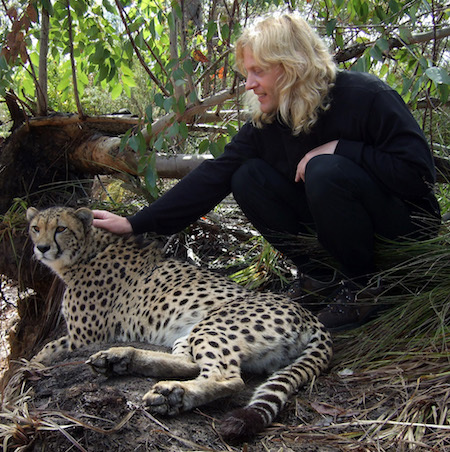
Some of Professor Eklund’s work was featured in the special Cats issue of the Annals of Improbable Research.

Marc Abrahams's Blog
- Marc Abrahams's profile
- 14 followers





